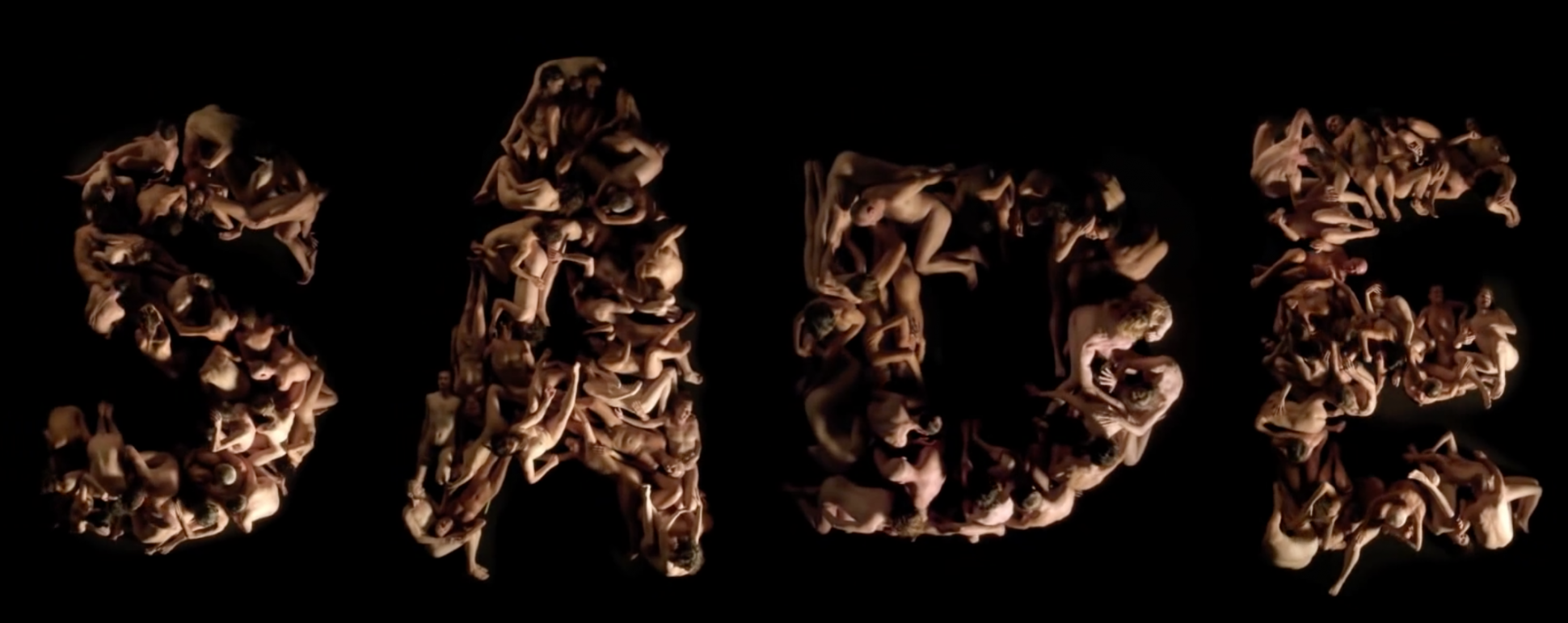
An image from the Musée d’Orsay video promoting the exhibition, which has been banned from youtube due to it’s ‘adult’ nature. Photo:Musée d’Orsay
In an attempt to culture myself a little, and ‘make the most’ of my year abroad in Paris, I recently visited the acclaimed Musée d’Orsay, famed for housing a vast collection of impressionist and post-impressionist French art in the once functional train station, which is now another famed Parisian architectural landmark. Having essentially no formal education in art or art history, and only the fleeting interest of an uninformed spectator to bolster me, I can’t emphasise enough my naivety when entering (although sadly, not when leaving) the grand façade of the museum.
The fact the running exhibition was entitled ‘Sade. Attacking the Sun’ meant next to nothing to me. Perhaps my two friends and I should have stopped to reflect further than ‘I’ve certainly heard of the Marquis de Sade’, even if it was only to draw the most fundamental link to ‘sadism’, which is derived from his name, before following the mass of Saturday afternoon museum-goers as they ebbed slowly into the exhibition area.
Our first encounter was with a blackened room featuring half a dozen screens, onto which a series of film clips were projected presenting the Marquis de Sade’s libertine philosophy, which outraged the moral, religious, and social thinking of his time. With no option but to follow the ‘sens de la visite’, given the crowds of people in attendance, these unsettlingly graphic images served as a very effective prologue for the dozen rooms that followed.
There is no question of the exhibition itself being an astoundingly well put together collection of works by artists such as Goya, Picasso, Delacroix, Rodin and Dali, to name a few, aiming to mark the 200th anniversary of the Marquis’ death by highlighting his ground-breaking influence on art and literature. Each room seemed to have its own definite tone, highlighted by the lighting, the artwork itself, historical information, and frequent and masterfully placed quotes. One of the few I remember; “It is always by way of pain one arrives at pleasure”, sets the general tone. If not through the images of shocking violence, gore, sexuality, and the sheer volume of genitalia (the image of a masturbating cherub-boy surrounded by winged vaginas will never fully leave me), then the resounding heartbeat which can be heard throughout the exhibition will certainly leave you feeling physically and emotionally uncomfortable, and questioning why on earth anyone would even flinch at the banality of ‘Fifty Shades’.
If, like me, you don’t know a thing about Donatien Alphonse Francois de Sade (1740–1814), I can now let you know he was an inexorable libertine who struck the first real blow against the Enlightenment; that is, against morality, humanism and, above all else, rationality. He is the author of some of the most provocative novels ever written, including ‘The 120 Days of Sodom’, and is famous for his sexual exploits involving his wife’s sister as well as numerous prostitutes of both sexes, who he reportedly physically and sexually abused- not to mention ‘unintentionally’ poisoned. Unsurprisingly, he was heavily condemned for blasphemy, which was a momentous crime during this period, among other things, and consequently spent a third of his life in prisons or insane asylums. Essentially, he believed in indulging the excesses of human immorality, far beyond reason, which in his mind was the true expression of liberty, and that “In order to know virtue, we must first acquaint ourselves with vice.”
Unsurprisingly, his work was banned following his death whilst in exile in Italy, yet he had already inspired the likes of Goya and Baudelaire (the author of the famous ‘Flowers of Evil’) with his violently dark moral vision. This was only the beginning, and it’s increasingly evident how the extremist philosophy and writings of Sade have gradually influenced society over time. There’s no need to look far today to witness how sadism informs popular culture; from Rihanna’s excitement over her ‘whips and chains’, the ‘Fifty shades of Grey’ sexual fantasies, to the increasing popularity of BDSM and fetish societies amongst students.
The Ivy league university of Harvard was seemingly the first to officially approve the fetish society ‘Harvard Munch’ back in 2012, sparking several documented copycats, such as UEA’s ‘Fetish Society’, as well as the University of Birmingham’s ‘Sexual Liberation Society’ (a clever guise), with the safe assumption being that many more have followed suit. It’s conceivable that what appears to be a ‘new wave’ of interest in sadism amongst young people, and in society in general, has been sparked by the overwhelmingly popular release of ‘Fifty Shades’ back in 2011. The mere mention of said ‘mummy porn’ sparks debate, as millions of fans rush to defend the popular novel against the intense scrutiny of sceptical literature enthusiasts and critics, who condemn it as poorly written drivel.
Having now witnessed real works of art inspired by Sade’s legacy, and the extent of their graphic sexual violence, I can’t help but feel that E. L. James’ novel does not push any boundaries, or explore any new or controversial ground. The release of the film in two weeks time does not come close to meriting such attention in my mind. It pales in the face of real sensationalist works produced over the past two centuries, which question more intimately the violent capacity of the human condition with a profoundly terrifying and graphic realism.
